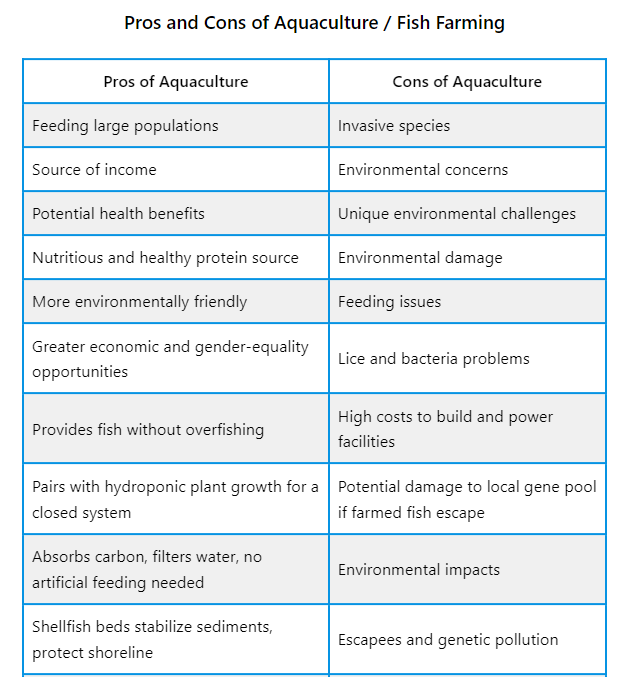Artesian wells provide a natural, consistent water supply, promoting sustainability. They can be cost-effective but may present challenges like potential contamination and limited output control. Careful management is essential for sustainable water sourcing.
Takeaways
- Lower operating costs and minimal maintenance make them cost-effective.
- Continuous water flow can lead to potential wastage and limited control.
- Reliable and sustainable water source with long-term cost savings.
- Over-extraction and inadequate supply during high demand are concerns.
- Environmental friendly extraction but requires sustainable practices for long-term viability.
Natural Flow of Water
Artesian wells are characterized by a natural flow of water that occurs due to the underground pressure within confined aquifers. These wells tap into aquifers where the water is confined between impermeable rock layers, causing the water to be under pressure. When a well is drilled into this aquifer, the water is forced upward due to the pressure imbalance between the aquifer and the surface, resulting in a continuous flow without the need for pumping.
The natural flow of water in artesian wells provides a reliable water source for communities and agricultural purposes. This constant supply of water is advantageous as it reduces the need for mechanical pumping systems, saving on energy costs and maintenance.
Additionally, the water obtained from artesian wells is often of high quality, as it is filtered through layers of rock and soil, making it naturally clean and free from many contaminants.
Consistent Water Supply
In addition to the consistent water supply provided by artesian wells, it is essential to highlight the reliability of this natural resource. Artesian wells offer a sustainable water source that can be depended upon over time, contributing to water security.
Moreover, the extraction of water from artesian wells typically has minimal environmental impact, making them a valuable and eco-conscious water supply option.
Reliability of Water
Ensuring a consistent water supply from artesian wells is essential for meeting the needs of communities and sustaining agricultural activities. The reliability of water from artesian wells can be a concern due to various factors that can affect the flow and quality of water.
One primary issue is the potential for over-extraction, which can lead to a decline in water levels and ultimately reduce the reliability of the water supply. Additionally, natural disasters such as droughts or floods can impact the recharge rate of artesian aquifers, affecting the overall availability of water from these wells.
Furthermore, the quality of water from artesian wells may vary over time, influenced by factors such as geological conditions, surrounding land use, and potential contamination sources. This variability in water quality can compromise the reliability of artesian wells as a sustainable water source.
Regular monitoring, maintenance, and proper management practices are imperative to ensuring the continued reliability of water from artesian wells for both domestic and agricultural purposes.
Sustainable Water Source
Maintaining a sustainable water source from artesian wells requires careful consideration of factors influencing water availability and quality. Artesian wells are known for providing a reliable water supply due to the natural pressure that allows water to flow to the surface without the need for pumping. However, the sustainability of this water source can be affected by various factors.
One key consideration is the recharge rate of the aquifer that feeds the artesian well. If water is extracted at a faster rate than it is replenished, the well may run dry, leading to issues with water availability.
Additionally, the quality of the water extracted from artesian wells must be monitored to guarantee it meets safety standards for consumption and other uses.
Climate change and human activities can also impact the sustainability of artesian wells by altering the natural flow of groundwater. To maintain a sustainable water source from artesian wells, it is essential to implement proper management practices, monitor water usage, and protect the surrounding environment to safeguard water quality and availability for future generations.
Minimal Environmental Impact
To achieve a minimal environmental impact while ensuring a consistent water supply from artesian wells, careful management of water extraction and surrounding land use is essential. This delicate balance is pivotal to maintain the sustainability of these natural water sources over the long term.
Here are three key considerations for minimizing the environmental impact of artesian wells:
- Monitoring and Regulation: Implementing thorough monitoring systems to track water levels, quality, and extraction rates is critical. Regulatory measures should be in place to guarantee that water extraction remains within sustainable limits to prevent negative consequences such as aquifer depletion or saltwater intrusion.
- Land Use Practices: Proper land use management around artesian wells can help protect the surrounding ecosystem. Preventing pollution from agricultural runoff, industrial activities, or urban development is crucial to maintain water purity and safeguard the biodiversity of the area.
- Community Engagement: Involving local communities in decision-making processes regarding artesian well usage fosters a sense of stewardship. Educating stakeholders about the importance of responsible water management encourages sustainable practices and promotes environmental awareness.
Potential for Contamination
Exploring the potential for contamination in artesian wells is essential for ensuring water safety.
Understanding the contamination risks associated with these wells can help in implementing effective protective measures.
Contamination Risks
Potential contamination risks associated with artesian wells stem from various sources such as nearby industrial activities, agricultural runoff, and improper waste disposal practices. These risks can compromise the quality and safety of the groundwater extracted from artesian wells, impacting both human health and the environment.
To better understand the contamination risks posed to artesian wells, consider the following factors:
- Industrial Activities: Industries located in the vicinity of artesian wells may release harmful chemicals and pollutants into the ground, leading to groundwater contamination. Leakage from storage tanks, improper disposal of industrial waste, and accidental spills are common causes of contamination.
- Agricultural Runoff: The excessive use of fertilizers, pesticides, and herbicides in agriculture can result in runoff that seeps into the groundwater, contaminating artesian wells. This runoff carries harmful substances that can pose health risks when consumed.
- Improper Waste Disposal: Inadequate waste disposal practices, such as dumping of waste materials directly on the ground or into nearby water bodies, can result in the contamination of groundwater sources, including artesian wells. Hazardous substances from these wastes can infiltrate the aquifer and pollute the water supply.
Protective Measures
Protective measures aimed at mitigating potential contamination risks for artesian wells encompass a range of essential strategies and monitoring protocols.
Establishing a controlled access area around the well to prevent unauthorized entry can reduce the risk of deliberate contamination.
Proper well construction and regular maintenance are vital to prevent surface water from seeping into the well. Installing watertight casings, sealing the annular space, and ensuring proper wellhead protection can safeguard against potential contaminants.
Routine water testing for indicators of pollution, such as bacteria, nitrates, and chemicals, is necessary to detect any early signs of contamination.
Implementing a thorough wellhead monitoring system can provide real-time data on water quality and facilitate immediate action if contamination is detected.
Training personnel on best practices for well maintenance and emergency response protocols can further enhance protection measures.
Cost-Effective Water Source
Utilizing artesian wells as a water source can provide a cost-effective and sustainable solution for meeting water needs in various settings.
- Lower Operating Costs: Artesian wells tap into underground water sources that are naturally pressurized, reducing the need for mechanical pumps or electricity to bring the water to the surface. This leads to lower operating costs compared to other water sources that require more energy-intensive extraction methods.
- Minimal Maintenance Requirements: Artesian wells are known for their reliability and longevity, requiring minimal maintenance once properly constructed. This translates to fewer ongoing costs associated with upkeep and repairs, making them a cost-effective option in the long run.
- Long-Term Cost Savings: While the initial investment in drilling an artesian well can be significant, the long-term cost savings often outweigh the upfront expenses. With proper management and regular monitoring, artesian wells can provide a consistent and cost-effective water supply for years to come.
Limited Control Over Output
Limited control over the output of artesian wells can present challenges in managing water flow rates and distribution. Artesian wells operate based on the natural pressure of underground aquifers, leading to a continuous flow of water without the need for mechanical assistance.
While this can be advantageous in providing a consistent water supply, it also means that the output of artesian wells cannot be easily regulated or adjusted to meet varying demands.
One of the main issues that arise from limited control over output is the potential for water wastage. If the flow rate from an artesian well exceeds the immediate needs of a community or agricultural operation, the excess water may go unused or even cause waterlogging issues.
Conversely, during periods of high demand, such as droughts or increased water consumption, the fixed output of artesian wells may prove insufficient to meet the required supply.
In essence, the inability to adjust the output of artesian wells according to specific requirements can lead to inefficiencies in water management and utilization. This limitation underscores the importance of careful planning and sustainable practices when relying on artesian wells as a water source.
Sustainable Water Management
Effective water management practices are essential for ensuring the long-term sustainability of artesian wells as a reliable water source. Artesian wells have the potential to provide a continuous supply of clean water, but without proper management, they can be at risk of depletion or contamination.
To maintain the sustainability of artesian wells, the following practices should be considered:
- Monitoring and Regulation: Regular monitoring of water levels and quality is vital to prevent over-extraction and contamination. Implementing regulations on water usage can help secure the long-term viability of the well.
- Water Conservation: Promoting water conservation practices within the community can help reduce the strain on artesian wells. Implementing measures such as rainwater harvesting and efficient irrigation techniques can contribute to sustainable water management.
- Collaboration with Stakeholders: Engaging with local communities, authorities, and other stakeholders is essential for developing thorough water management plans. Collaboration can help address issues collectively, ensuring the longevity of artesian wells as a valuable water resource.
Frequently Asked Questions
Can Artesian Wells Be Affected by Drought Conditions?
Artesian wells can be impacted by drought conditions as reduced rainfall and water scarcity can lower the water levels in underground aquifers. This can result in decreased water flow from the well, affecting its reliability during dry periods.
How Often Should Artesian Well Water Be Tested for Contaminants?
Regular testing of artesian well water for contaminants is essential to guarantee its safety. Industry standards recommend testing annually, but frequency may vary based on local conditions. Consult with a water quality professional for tailored advice.
What Are the Upfront Installation Costs of an Artesian Well?
The upfront installation costs of an artesian well can vary depending on factors such as location, depth, and required equipment. Typically, costs can range from several thousand to tens of thousands of dollars for a new installation.
Are There Ways to Regulate the Water Output From an Artesian Well?
Regulating the water output from an artesian well can be achieved through the use of control valves or pumps. These mechanisms allow for adjustments to the flow rate, ensuring efficient water supply management and preventing wastage.
What Measures Can Be Taken to Ensure Long-Term Sustainability of Artesian Wells?
To guarantee the long-term sustainability of artesian wells, best practices include monitoring water levels regularly, implementing responsible usage guidelines, promoting conservation efforts, conducting periodic maintenance checks, and collaborating with relevant stakeholders to establish sustainable water management strategies.
Conclusion
To sum up, when utilizing artesian wells as a water source, it is crucial to take into account the potential for contamination and limited control over output.
It is vital to contemplate the sustainability and management of water resources.
Overall, understanding the pros and cons of artesian wells is essential for making informed decisions regarding water management and usage.









